When the Tofugu team was in Japan earlier this year, we were very lucky to have the Gakuranman drive us around to places that might be hard to get to otherwise. We rented a car, and I was a little confused by a big, green and yellow sticker on the front and back of the car.
I asked the Gakuranman what it meant and he explained that the sticker was for beginner drivers. I would soon find out that the Gakuranman had more than earned this sticker, and later found out that it was just one sticker of many.
It shouldn't be surprising that Japan offers a whole array of colorful symbols for the road, but you might not know what all of them mean. Here's the breakdown of the four stickers you might see in Japan:
Beginners 🔰
In the US, if you take a driving class before you get your license, you usually get the honor of driving around in a car with a giant, yellow "STUDENT DRIVER" sign so everybody on the road is at least aware of your incompetence.
But once you get your license, there's no indication that you're a new driver. You're free to terrorize the roads without anybody knowing that you've only been driving for two weeks.
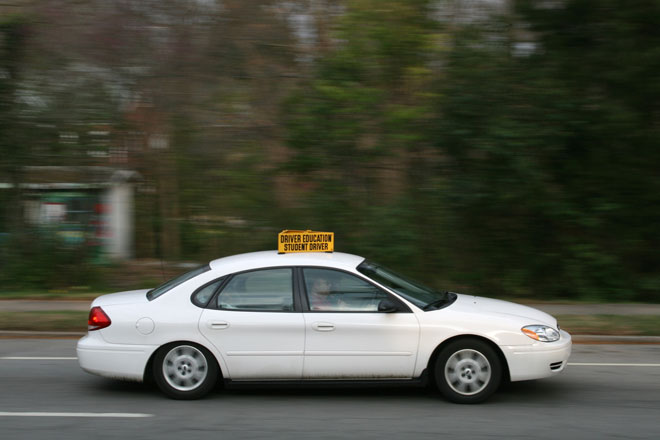
Not so in Japan. For one year after you get your driver's license in Japan, you have to put the green and yellow "beginner" sticker on the front and back of your car. It lets other drivers on the road that they should maybe give you a little more room and patience than your ordinary driver.
The official name of this sticker in Japanese is shoshinuntenshahyoushiki 初心運転者標識, but you might know it as the wakabamaaku 若葉マーク, or the "green leaf mark." I guess that the implication is that, as a driver, you're like a fresh leaf, right out of the bud.

What's really interesting about the wakaba mark is how far it's spread. Even though it was created for new drivers, people from virtually every walk of life have embraced the symbol.
Car enthusiasts from around the world slap the wakaba mark on their cars, even if they're not even remotely beginners. Games will use the symbol to indicate the "easy" or "beginner" difficulties. I've seen pictures of wakaba stickers slapped onto computer cases. There's a wakaba emoji. Hell, I even found this picture of a horse with the wakaba mark on it. New rider, I guess?

It's cool to me that the wakaba mark has spread so far beyond its intended purpose and is so widely understood. Could the wakaba mark one day become the universal symbol for beginners? Time will tell.
Elderly People
At the beginning and end of people's driving careers, they tend to not drive as well. In the beginning, it's because of inexperience; towards the end, it's because judgement and reaction time aren't what they used to be.
The way that the Japanese tackle the issue of elderly drivers is, you guessed it, with another sticker. It's called the koureiuntenshahyoushiki 高齢運転者標識, or the "koreisha mark" ("koreisha" meaning "elderly") for short.
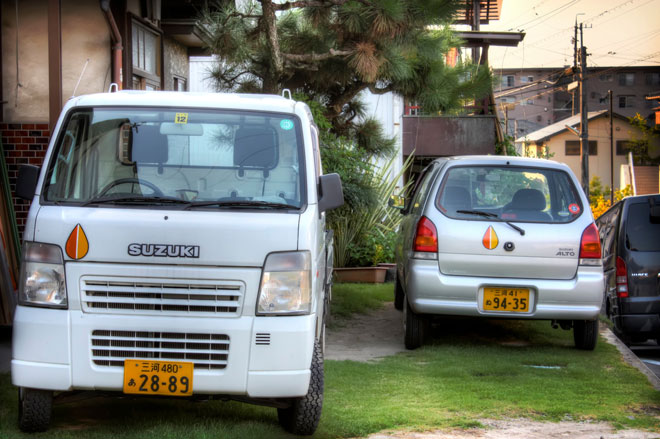
Drivers aged 70 and older have to display the koreisha sticker on their car. It can let other drivers on the road know to have a little more patience with a driver with this particular sticker on their car. Plus, you get other perks like reserved parking spaces.
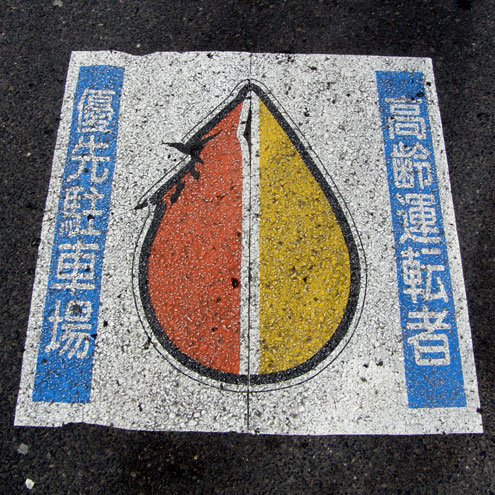
Koreisha means "elderly," but people have given the mark other, less flattering names. Instead of the green leaf mark of beginner drivers, people will sometimes call it the autumn leaf, dried leaf, or even fallen leaf mark.
As you might imagine, the image of a withered, dried up, fallen leaf is kind of an offensive way to describe the elderly. Because of this branding problem, in 2011 the koreisha mark changed from the orange and yellow teardrop shaped sticker to a bright, colorful clover symbol.
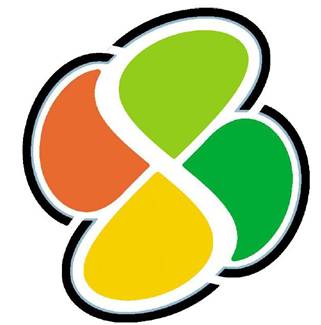
The change to the new symbol wasn't that long ago, so you still might see the former koreisha symbol around on cars in Japan.
Handicapped People
Like the US, Japan also has a catch-all handicapped permit for cars. Unlike the US, Japan has doesn't always use the International Symbol of Access, the universally recognizable symbol of a person in a wheelchair on a blue background.
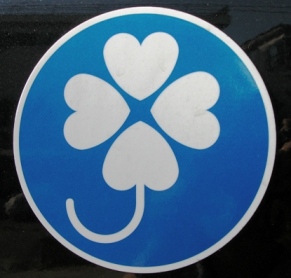
Instead, Japan also uses a weird, four-leaf clover umbrella symbol called the shintaishougaishahyoushiki 身体障害者標識. It's supposed to be encompass more disabilities than the obvious physical disabilities represented by the International Symbol of Access.
Plus, it fits in with the rest of the other, nature-themed stickers, and disabled otaku can go nuts over having a sticker nicknamed the "yotsuba mark."
Hearing-Impaired People
Aside from the general handicapped sticker, Japan also has one just for hearing-impaired people. The symbol (called choukakushougaishahyoushiki 聴覚障害者標識 in Japanese) is yellow and green, and supposed to represent two ears arranged as a butterfly.

I get that it's supposed to fit in with the nature theme, but an ear butterfly sounds like something you would find in a serial killer's house.
So if you're ever driving in Japan and see one of these stickers, give those drivers a little more room, consideration, and patience. Who knows? The Gakuranman might even be behind the wheel.
